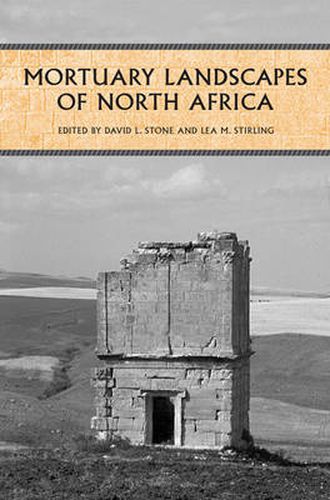Readings Newsletter
Become a Readings Member to make your shopping experience even easier.
Sign in or sign up for free!
You’re not far away from qualifying for FREE standard shipping within Australia
You’ve qualified for FREE standard shipping within Australia
The cart is loading…






Cemetery and landscape studies have been hallmarks of North African archaeology for more than one hundred years. Mortuary Landscapes of North Africa is the first book to combine these two fields by considering North African cemeteries within the context of their wider landscapes. This unique perspective allows for new interpretations of notions of identity, community, imperial influence, and sacred space. Based on a wealth of material research from current fieldwork, this collection of essays investigates how North African funerary monuments acted as regional boundaries, markers of identity and status, and barometers of cultural change. The essays cover a broad range in terms of space and time - from southern Libya to eastern Algeria, and from the seventh century BCE to the seventh century CE. A comprehensive introduction explains the importance of the ‘landscape perspective’ that these studies bring to North African funerary monuments, while individual case-studies address such topics as the African way of death among the Garamantes, the ritual reasons for the location of certain Early Christian tombs, Punic burials, Roman cupula tombs, and the effects of rapid state formation and imperial incorporation on tomb builders. Unique in both scope and perspective, this volume will prove invaluable to a cross-section of archaeological scholars.
$9.00 standard shipping within Australia
FREE standard shipping within Australia for orders over $100.00
Express & International shipping calculated at checkout
Cemetery and landscape studies have been hallmarks of North African archaeology for more than one hundred years. Mortuary Landscapes of North Africa is the first book to combine these two fields by considering North African cemeteries within the context of their wider landscapes. This unique perspective allows for new interpretations of notions of identity, community, imperial influence, and sacred space. Based on a wealth of material research from current fieldwork, this collection of essays investigates how North African funerary monuments acted as regional boundaries, markers of identity and status, and barometers of cultural change. The essays cover a broad range in terms of space and time - from southern Libya to eastern Algeria, and from the seventh century BCE to the seventh century CE. A comprehensive introduction explains the importance of the ‘landscape perspective’ that these studies bring to North African funerary monuments, while individual case-studies address such topics as the African way of death among the Garamantes, the ritual reasons for the location of certain Early Christian tombs, Punic burials, Roman cupula tombs, and the effects of rapid state formation and imperial incorporation on tomb builders. Unique in both scope and perspective, this volume will prove invaluable to a cross-section of archaeological scholars.